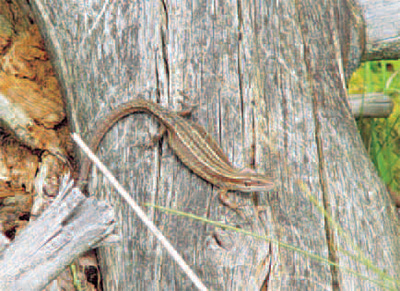Beginnings
In 1933 Hednesford Hills was given to the
local Council by the Marquis of Anglesey
under a Deed of Gift. In 1981 much of the
site became common land and in 1992 it
achieved Local Nature Reserve status.

Heathland needs to be managed to prevent it being taken over by invasive vegetation such
as scrub and tussocky grasses. During the summer months, Dexter cattle graze Hednesford
Hills as part of a scheme to re-introduce traditional methods of management
The social and cultural role of the hills
Heathlands such as Cannock Chase and Hednesford Hills have
been managed by people for thousands of years. The combination
of sand and gravel soils, tree harvesting and grazing produced an
open landscape with small woodlands and scattered trees. Since
the 1850s, however, much of this heathland has disappeared.
Traditionally, sheep, cattle and other animals were grazed on
Hednesford Hills. The soil is unsuitable for growing crops, but
people have found many uses for the other natural resources that
the hills provide. For example, broom was used for making
brooms and brushes, bracken for making soap and bilberries for
brewing and dyeing.
In the late 1870s a reservoir was built on Hednesford Hills, but in
1887 it lost thousands of gallons of water when part of its
embankment collapsed. The reservoir was abandoned in 1930,
and in the 1950s a motor racing circuit that became known as
Hednesford Hills Raceway was built on the site. Meetings are still
held there today. Construction of a new, covered reservoir at a
different location on the hills was completed in 1992.
The wildlife of Hednesford Hills
Lowland heath is a very rare habitat that supports a specialised
range of plants and vegetation such as heather, wavy hairgrass,
crowberry, cowberry, bilberry and the bilberry/cowberry hybrid
known locally as the ‘Cannock Chase berry’. The hills are home to
a wide variety of mammals, invertebrates and birds, and are
sometimes visited by red and fallow deer. Recently, muntjac deer
have been spotted.

Cannock Chase berry.
Image courtesy of the Heathland Partnership

The common lizard, Zootoca vivipara, is widespread on Hednesford Hills but
seldom seen as it is very shy. You may be able to spot it sunbathing on logs
and the sides of paths. In late summer it gives birth to live young, which are
almost black in colour and can be seen more easily than the adults.
Image courtesy of Andy Jukes
|
Racehorse training
Horses were probably trained on Hednesford
Hills since at least 1760, and by the mid
1830s about 120 horses trained here. Good
drainage, excellent turf and a central location
helped to provide an ideal training ground,
and national recognition followed.
Hednesford had at least six racing stables by
the mid 1850s, but horse training declined as
coal mining grew. By the early 1900s only
three stables remained.

Racehorses being exercised on Hednesford Hills c1920-1930.
Image courtesy of the Museum of Cannock Chase

|
The woodland
The wooded areas of Hednesford
Hills are mostly plantations that
were established in the 1960s or
1980s. Gaskin’s Wood, the
plantation opposite the Museum of
Cannock Chase’s main building is
older. It dates back to the 1800s.
The Gaskin murder
Gaskin’s Wood is so called because Elizabeth
Gaskin, a Hednesford lady, was murdered
there in 1919. Her husband, Henry Thomas
Gaskin, killed her in the woods shortly after
he returned from serving in the Great War.
He was hanged at Winson Green Prison, in
Birmingham, on 8 August 1919.

Several postcards followed the events of the Gaskin murder
|
 Elizabeth Gaskin (on the right) is pictured with her
Elizabeth Gaskin (on the right) is pictured with her
sister-in-law, Mary Law.
Images courtesy of the Museum of Cannock Chase |







